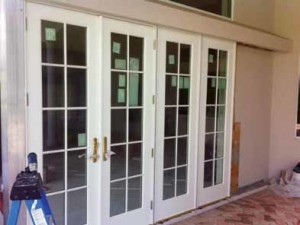Construction Permits Don’t Avoid Them
![]() Our clients sometimes question the need for and cost of a building permit, particularly on smaller projects. The approvals take time and cost money, so why not just work without a permit?
Our clients sometimes question the need for and cost of a building permit, particularly on smaller projects. The approvals take time and cost money, so why not just work without a permit?
Let’s look at the mission statement for the Building Review Department in Collier County:
Collier County’s Building Review team is dedicated to maintaining the highest standard of public safety and to protecting the property rights of the citizens of Collier County. This team ensures the building requirements of the State of Florida and Collier County are fully met by providing information and guidance through the permitting process. Each plans reviewer and inspector is expected to provide professional, consistent, and friendly service while working with designers, developers, contractors, and owners to foster an environment that understands the needs of our customers, and works for full compliance of the governing codes.
The key words here are “safety” and “protection.” While permits are required for just about any type of home construction or significant improvements, I will focus on my area of expertise – hurricane protection.
“Safety” is pretty clear – by ensuring both state and Collier County building codes are met, the permit review process provides rules that must be adhered to when installing hurricane protection. If you use a contractor that is working without a permit, there is no one checking to see that they are in compliance with the building codes. Thus, when you need it most, during an actual storm, your hurricane protection may fail, because it was not installed properly in the first place.
“Protection” actually works to the benefit of both homeowner and contractor. Because an inspection by a certified Building Inspector is required to close out the permit, the homeowner can be sure that the installation was done in accordance with the building codes, and the manufacturer’s specified installation instructions (which are based on lab testing to simulate hurricane conditions). Likewise, the contractor also receives “protection,” because a trained third-party inspector has verified the work was done properly – so if there is ever an issue regarding the performance of the product in a storm, he can show the product was installed as per the requirements.
 You will also see in the above mission statement the words “plans reviewer.” These are the professionals who examine the work plan we submit, and then compare the protection we are proposing with the requirements, to make sure we are meeting or exceeding what is necessary to protect the home or business in a storm.
You will also see in the above mission statement the words “plans reviewer.” These are the professionals who examine the work plan we submit, and then compare the protection we are proposing with the requirements, to make sure we are meeting or exceeding what is necessary to protect the home or business in a storm.
How do we calculate the requirements for adequate protection? We use what is called a “Design Pressure.” This is a calculation of the maximum pressures (both positive/pushing in and negative/ pulling out) that each window and door in the house (including sliding glass doors) might experience during a storm. Factors that go into the calculation include size of the opening, height above the ground, and proximity to the coastline. We then must show that we are using a product that has the ability to withstand these pressures, AND that we will install it with the proper anchors, spaced properly, to meet the manufacturer’s warranty.
Use the protection your government provides – always have a permit pulled for any construction!

Leave a Reply
Want to join the discussion?Feel free to contribute!